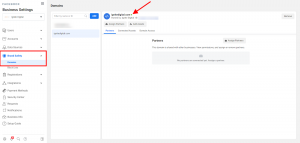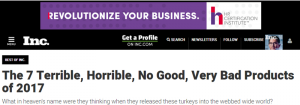Out of stock items cost retailers nearly $ 1 trillion ever year. Running out of a popular product can cost ecommerce sites hundreds, or even thousands of conversions. Fortunately, there is a simple solution to these situations that can mitigate stock issues: Back in stock emails.
This solution has two parts. First, when a shopper encounters an out of stock item, they’re given the option to enter their email address. When the item’s stock is replenished, the user is alerted in real time via a personalized back in stock email. Although a small incentive is sometimes offered, this is not usually necessary.
On their face, back in stock emails may seem like a simple idea. However, their benefits are numerous. Let’s take a look at some of the reasons these easy-to-implement solutions are deceptively powerful.
1. They Mitigate Abandonment While Preventing Comparison Shopping
Picture this: You decide on the perfect coat and you’re ready to buy. Suddenly, you find out that your size is not available. What’s the first thing you’re likely to do?
If you’re like most people, you abandon the site you’re on and search for the coat somewhere else.
The first and most important feature of back in stock emails is their ability to transform nearly-guaranteed abandonment into an opportunity.
When products are out of stock, potential customers leave your site for your competitors. Others simply give up on purchasing the item altogether.
While offering alternative recommendations can sometimes be effective, an ersatz product might not satiate a customer with their heart set on the original item.
Back in stock emails stop abandonment and prevent lost revenue with a personalized solution that demonstrates you care about the shopper’s business.
2. They Capture Leads Without an Incentive
Another benefit of back in stock emails comes from the way in which the customer is contacted. Since the user is interested in your brand (and the out of stock item), they’re likely to become a lucrative contact for your list.
Capturing leads often necessitates offering the consumer an incentive in exchange for their email address. Back in stock emails circumvent the need to offer an incentive. In addition, they connect you with a shopper with an active interest in your products.
3. They Keep Shoppers on Your Email List
It’s never nice to know that people are unsubscribing from your email list. After all, the whole point of sending emails to consumers is to engage them. We’ve written many times about the optimal timing and frequency of marketing emails.
However, some people are simply out to game the system. They offer their email address, redeem their discount, and immediately unsubscribe from your list without a second thought – and there’s very little your brand can do about it.
Fortunately, that’s not a problem with back in stock emails – because the user will have a vested interest in staying on your list. After all, if they’re interested enough in a product to offer their email address, they’re going to want to stick around.
Differing opinions exist as to whether people who sign up for back in stock emails should be subscribed to your regular email address as well. Some brands prefer to wait until they send the back-in-stock email to add them to the general list. It’s your call to make.
4. They Bring Shoppers Back to Your Site and Allow for Remarketing
Finally, perhaps the most important aspect of back in stock emails is that they increase your conversions. It’s difficult to know exactly how serious a shopper is about making a purchase, but signing up for alerts about an item is an excellent indicator of intent to convert.
By signing up, they’re showing a level of comfort with your brand and products that demonstrates potential for long-term profitability. These are potential customers you’ll want to nurture, as their affinity for your brand makes them a perfect candidate for expanded lifetime customer value. They already like you – offer them a good experience, and they’ll buy from you again and again.
Back in Stock Emails at a Glance
Back in stock emails are a simple but highly effective solution that turn what could be a negative experience into an opportunity. By utilizing effective technology, you have the power to turn near-certain abandonment into repeat purchases from a loyal customer.
Digital & Social Articles on Business 2 Community
(53)
Report Post





